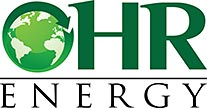
How Does Solar Work
Solar Radiation Basics
Solar radiation is a general term for the electromagnetic radiation emitted by the sun. We can capture and convert solar radiation into useful forms of energy, such as heat and electricity, using a variety of technologies. The technical feasibility and economical operation of these technologies at a specific location depends on the available solar radiation or solar resource.
Basic Principles
Every location on Earth receives sunlight at least part of the year. The amount of solar radiation that reaches any one “spot” on the Earth’s surface varies according to these factors:
- Geographic location
- Time of day
- Season
- Local landscape
- Local weather.
Because the Earth is round, the sun strikes the surface at different angles ranging from 0º (just above the horizon) to 90º (directly overhead). When the sun’s rays are vertical, the Earth’s surface gets all the energy possible. The more slanted the sun’s rays are, the longer they travel through the atmosphere, becoming more scattered and diffuse. Because the Earth is round, the frigid polar regions never get a high sun, and because of the tilted axis of rotation, these areas receive no sun at all during part of the year.
The Earth revolves around the sun in an elliptical orbit and is closer to the sun during part of the year. When the sun is nearer the Earth, the Earth’s surface receives a little more solar energy. The Earth is nearer the sun when it’s summer in the southern hemisphere and winter in the northern hemisphere. However the presence of vast oceans moderates the hotter summers and colder winters one would expect to see in the southern hemisphere as a result of this difference.
The 23.5º tilt in the Earth’s axis of rotation is a more significant factor in determining the amount of sunlight striking the Earth at a particular location. Tilting results in longer days in the northern hemisphere from the spring (vernal) equinox to the fall (autumnal) equinox and longer days in the southern hemisphere during the other six months. Days and nights are both exactly 12 hours long on the equinoxes, which occur each year on or around March 23 and September 22.
Countries like the United States, which lie in the middle latitudes, receive more solar energy in the summer not only because days are longer, but also because the sun is nearly overhead. The sun’s rays are far more slanted during the shorter days of the winter months. Cities like Denver, Colorado, (near 40º latitude) receive nearly three times more solar energy in June than they do in December.
The rotation of the Earth is responsible for hourly variations in sunlight. In the early morning and late afternoon, the sun is low in the sky. Its rays travel further through the atmosphere than at noon when the sun is at its highest point. On a clear day, the greatest amount of solar energy reaches a solar collector around solar noon. Diffuse and Direct Solar Radiation
As sunlight passes through the atmosphere, some of it is absorbed, scattered, and reflected by the following:
- Air molecules
- Water vapor
- Clouds
- Dust
- Pollutants
- Forest fires
- Volcanoes.
This is called diffuse solar radiation. The solar radiation that reaches the Earth’s surface without being diffused is called direct beam solar radiation. The sum of the diffuse and direct solar radiation is called global solar radiation. Atmospheric conditions can reduce direct beam radiation by 10% on clear, dry days and by 100% during thick, cloudy days.
Measurement
Scientists measure the amount of sunlight falling on specific locations at different times of the year. They then estimate the amount of sunlight falling on regions at the same latitude with similar climates. Measurements of solar energy are typically expressed as total radiation on a horizontal surface, or as total radiation on a surface tracking the sun.
Radiation data for solar electric (photovoltaic) systems are often represented as kilowatt-hours per square meter (kWh/m2). Direct estimates of solar energy may also be expressed as watts per square meter (W/m2).
Radiation data for solar water heating and space heating systems are usually represented in British thermal units per square foot (Btu/ft2).
Content courtesy of www.energysaver.gov
Types of Solar Power
Throughout the years, humanity has learned to make good use of both the suns light and heat. The following techniques each take a unique approach towards harvesting solar energy. The specific purpose, advantages and disadvantages of each respective technique allow solar power to be broadly applicable:
- Solar photovoltaic power: solar photovoltaic power is the most commonly found residential application of solar energy. Solar photovoltaic power makes use of solar panels to convert sunlight into electricity.
- Concentrating solar power: CSP is a type of solar power where parabolic mirrors are used to focus sunlight on a central point or plane. In parabolic through systems, the heat is captured and later converted to current through a steam generator. In a parabolic dish system, the sunlight is focused on a special solar cell, which converts the concentrated sunlight into power.
- Solar thermal energy: solar thermal energy uses a solar collector to capture the heat of the sun. The captured heat then used to heat a building’s water supply, providing warm water and/or central heating.
- Passive solar energy: passive solar energy makes use of architectural ‘tricks’ to enhance a building’s interior climate by allowing the sun to heat the building in appropriate times and places.
Content courtesy of Solarpower2day
